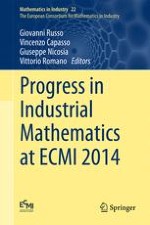2016 | Supplement | Chapter
Advances in the Mathematical Theory of the Finite Element Immersed Boundary Method
Authors : Daniele Boffi, Nicola Cavallini, Lucia Gastaldi
Published in: Progress in Industrial Mathematics at ECMI 2014
Publisher: Springer International Publishing
Activate our intelligent search to find suitable subject content or patents.
Select sections of text to find matching patents with Artificial Intelligence. powered by
Select sections of text to find additional relevant content using AI-assisted search. powered by
